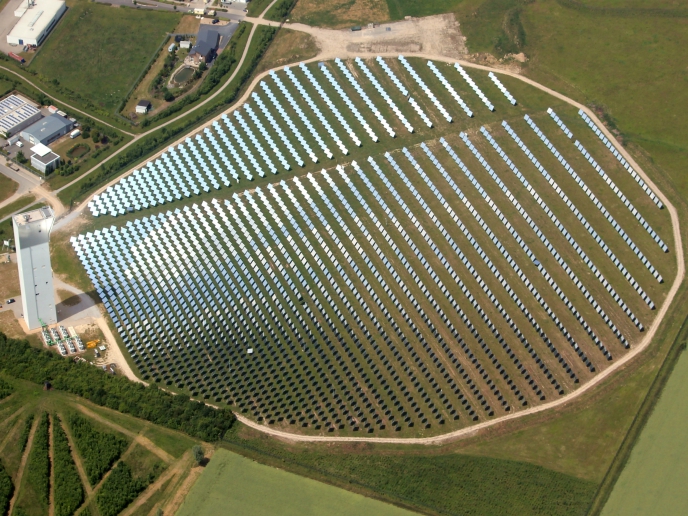Sulfur poised to transform the future of solar energy storage
Thermal storage of surplus solar energy is an inherent feature of concentrated solar power plants. It not only provides for reliable base-load energy generation but can also meet the challenge of on demand electricity from renewable energy sources. Heat can be stored at extremely high temperatures using a liquid or solid storage medium. Finding cheaper and more efficient solutions that harvest more sunlight and store thermal energy for a long time is at the core of the EU-funded PEGASUS project. To reach their objectives, project partners have tapped into the potential of sulfur for thermochemically storing solar energy and generating carbon-free round-the-clock electricity. This concept was combined with an innovative centrifugal receiver that can heat bauxite particles to 900 °C by concentrated solar energy. The technology was tested at the Jülich Solar Power Tower of the German Aerospace Center.
Sulfur storage cycle: no energy gets lost
The key concept behind storing solar energy in sulfur relies on sulfur combustion. The innovative process developed by the project team involves a number of steps. The sunlight focused on the solar power tower is harvested in a centrifugal particle receiver which supplies the high-temperature heat to split sulfuric acid (H2SO4) into water, sulfur dioxide (SO2) and oxygen. In a second step, SO2 is transformed into elemental sulfur and H2SO4 in an innovative disproportionation reactor. Then, when energy is needed, sulfur is combusted to produce high-temperature heat and SO2. “Sulfur combustion can produce high-quality heat at temperatures in excess of 1 200 °C, suitable for electricity generation using a gas turbine. Compared to other heat storage mechanisms, the stored energy (heat) can be retrieved at a temperature higher than that of the original heat input (900 °C), thereby allowing the use of more efficient power generation schemes,” explains project coordinator Dennis Thomey. During this cycle, the sulfur is collected to form a pile and the H2SO4 is stored in suitable tanks. When the sun is shining the sulfur pile grows while the H2SO4 tank is emptied. During the night or when it is cloudy, the sulfur pile reduces while the H2SO4 tank is filled. Renewable power is generated at constant production rates while H2SO4 and sulfur are used as energy carriers and recycled with virtually no energy losses.
Sulfur’s promising potential
The elemental sulfur cycle can store and supply heat at a higher temperature than is possible with molten salts – the conventional thermal storage medium used in solar power towers. Moreover, in comparison to classical thermal storage systems that inevitably lose sensible heat to the environment over time, solar energy can be long-term stored in solid sulfur and released at will. “Sulfur cycle not only can permanently store solar energy with virtually no energy losses but, being one of the lightest solid elements and extremely energy-rich, has 30 times higher energy density compared to molten salts. The long-term storage of solar energy is an important prerequisite to completely replace fossil power plants with renewable energy sources,” concludes Thomey.
Keywords
PEGASUS, sulfur, solar energy, H2SO4, molten salt, thermal storage, sulfuric acid, sulfur dioxide







